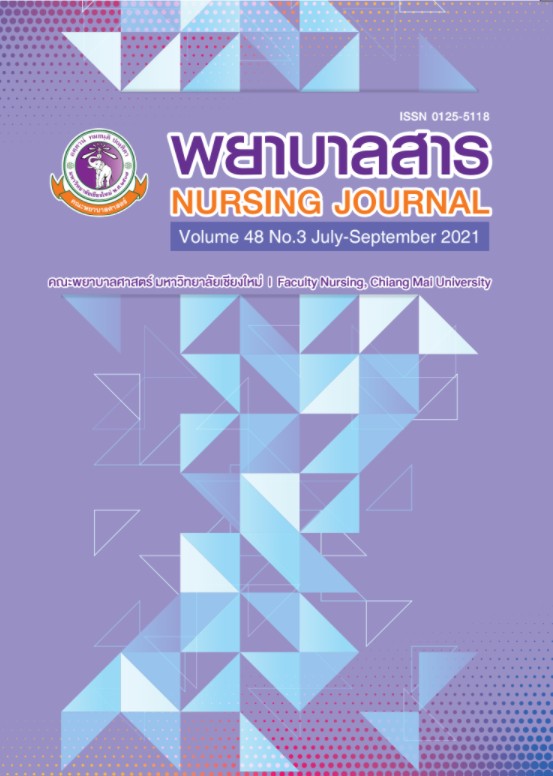Alcohol Drinking Behavior Among Elders and Consequences
Keywords:
Alcohol drinking, Elderly, ConsequencesAbstract
Alcohol drinking among elderly people is increasing. This may lead to major consequences in both individual and health care system. The aim of this study was to explore behavior and consequences of alcohol drinking among elderly people. Study samples were 359 older adults in a selected community. Data were collected using the standardized questionnaire AUDIT (Alcohol Use Disorders Identification Test) (2009), along with an assessment tool for behavior and impact of alcohol drinking. Data were analyzed using descriptive statistics.
Study results showed that during the 1-year period of time, 67 out of 359 participants (18.7 %) were alcohol drinkers. Among these, there were males 61.2 and females 38.8 %. General characteristics among these drinkers was following; 56.7% did not attend school, 41.8 % had completed primary school, and 44.8% had underlying diseases. The average age of the first time drinking in male and females were 26.6 and 46.5 years old. The average cost of drinking was 292.7 Bath per month. The most common type of alcoholic drink was white liquor. The frequency of alcohol consumption was more than 4 time per week in 50.7% of the drinkers. The most reason of drinking was for health benefits, at 55.2%. There were 14.9 % of the drinkers engaged with tobacco smoking. Drinkers for 97% purchased liquor from local grocery stores.
The interpretation of risk level based on AUDIT indicated that 29.9%, 1.5%, and 14.9% of the drinkers were classified as risky/hazardous, high-risk/harmful, and high risk / alcohol dependence, respectively. Almost the them (97%) had no intention to quit drinking. Regarding to the information about problems related to alcohol drinking, 13.4% had acquired accidents and injuries, 16.4% was being blamed by family members, 6.0% ever had conflicts with family members, and 1.5% had ever committed physical assault their family members.
Results of this study suggest that although the elders in this study consumed only small or moderate amount of alcohol, they are frequent drinkers and some of them are addicted. Especially, there are consequences including health impact, safety and family related problems. These findings indicate the importance of the intervention measures to prevent and reduce excessive alcohol consumption among older people in a community.
References
Babor, T. F., Higgins-Biddle, J. C., Saunders, J. B., & Monteiro, M. G. (2009). The alcohol use disorders identification test: Guidelines for use in primary care (2nd ed.). Geneva: World Health Organization.
Blow, F. C., & Barry, K. L. (2002). Use and misuse of alcohol among older women. PubMed, 26(4): 308-3015. Retrieved from http://www.ncbi.nlm. nih.gov/pubmed 12875042
National Statistical Office. (2011). The smoking and drinking behavior survey 2011. (in Thai) Retrieved from https://www.hiso.or.th/health_survey/DOC/H144.php
National Statistical Office. (2014). The smoking and drinking behavior survey 2014. (in Thai) Retrieved from https://www.hiso.or.th/health_survey/DOC/ H144.php
Panya, P., Sethabouppha, H., & Jormsri, P. (2013). Experiences of relapse among elderly with alcohol dependence. Nursing Journal, 40(4), 45-55. (in Thai)
Shield, K. D., Parry, C., & Rehm, J. (2012). Chronic diseases and conditions related to alcohol use. Alcohol Research: Current Reviews, 35 (2). Retrieved from http://pubs.niaaa.nih. gov/publications/Arcr352/155-173.htm
Sop Moei hospital. (2015). Alcohol treatment data and morbidity rate data for 2009-2011. Sop Moei hospital. (in Thai)
Steinhagen, A. K., LMSW., & Friedman, B. M. (2008). Substance abuse and misuse in older adults. Aging Well, 3(20), 21-35.
Thavorncharoensap, M., Teerawattananon, Y., Chaikledkaew, U., Lertpitakpong, C., Yothasamut, J., Thitiboonsuwan, K., & Neramitpitagkul, P. (2008). A study on costs of social, health and economic consequences of alcohol consumption in Thailand. HITAP. (in Thai)
Waleewong, O., Thamarangsi, T., & Jankhotkaew, J. (2014). Alcohol’s harm to others in Thailand: Concept, situation and gap in knowledge. Journal of Health Systems Research, 8(2), 111-119. (in Thai)
Wongpoom, T., Sukying, C., & Udomsubpayakul, S. (2011). Prevalence of depression among the elderly in Chiang Mai province. Journal of Psychiatric Association of Thailand, 56(2), 103-116. (in Thai)
World Health Organization. (2014). Global status report on alcohol and health 2014. Geneva: WHO. Retrieved from http://www.who.int/substance_abuse/ publications /global_ alcohol_ report/en/
Downloads
Published
How to Cite
Issue
Section
License
บทความที่ได้รับการตีพิมพ์เป็นลิขสิทธิ์ของวารสารพยาบาลสาร
ข้อความที่ปรากฏในบทความแต่ละเรื่องในวารสารวิชาการเล่มนี้เป็นความคิดเห็นส่วนตัวของผู้เขียนแต่ละท่านไม่เกี่ยวข้องกับมหาวิทยาลัยเชียงใหม่ และคณาจารย์ท่านอื่นๆในมหาวิทยาลัยฯ แต่อย่างใด ความรับผิดชอบองค์ประกอบทั้งหมดของบทความแต่ละเรื่องเป็นของผู้เขียนแต่ละท่าน หากมีความผิดพลาดใด ๆ ผู้เขียนแต่ละท่านจะรับผิดชอบบทความของตนเองแต่ผู้เดียว






